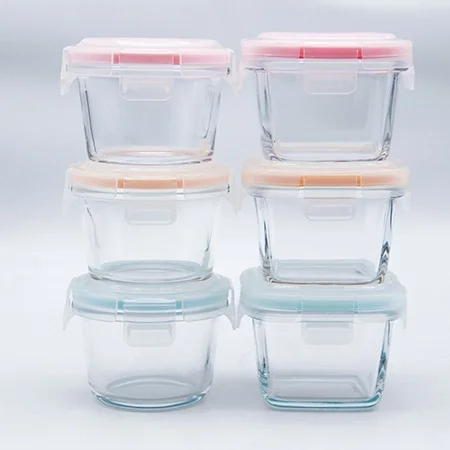As people's living standards improve, their requirements for food are also getting higher and higher. As a common food packaging method, mini food containers have attracted more and more attention to their health and safety issues. So, how to ensure the hygiene and safety of mini food containers?

First of all, the choice of material for mini food containers is very important. Generally speaking, the material of mini food containers should be food-grade materials, such as PP, PE, etc. These materials are resistant to high temperatures, low temperatures, and corrosion, and can ensure the quality and safety of food. In addition, attention should be paid to selecting materials that comply with national standards to ensure their hygienic safety.
Secondly, the production process of mini food containers is also very important. During the production process, production should be carried out in strict accordance with relevant national standards to ensure the hygiene and safety of the production process. At the same time, production equipment must be regularly maintained and cleaned to ensure the hygiene and safety of production equipment.
Thirdly, the packaging of mini food containers also needs to pay attention to hygiene and safety. During the packaging process, aseptic packaging technology should be adopted to avoid contamination by bacteria and other harmful substances. In addition, packaging materials must be strictly tested and screened to ensure the hygiene and safety of packaging materials.
The storage and transportation of mini food containers also require attention to hygiene and safety. During storage and transportation, contact with harmful substances, moisture, heat, etc. should be avoided. At the same time, the storage and transportation environment must be regularly cleaned and disinfected to ensure the health and safety of the storage and transportation environment.
Finally, the use of mini food containers should comply with hygienic standards. It should be cleaned and disinfected before use. Detergent and water should be used for cleaning, and disinfectants that meet hygienic standards should be used for disinfection. When using mini food containers, direct contact with food should be avoided to avoid contamination of food.
To sum up, ensuring the hygienic safety of mini food containers requires consideration of many aspects such as material selection, production process, packaging, storage and transportation. Only by strictly controlling all aspects can the hygiene and safety of mini food containers be ensured. When consumers purchase mini food containers, they should choose products that meet hygiene standards, and they should also pay attention to hygiene and safety when using them.
How to choose a mini food container supplier
Material selection and purchasing tips for mini food containers
Precautions and safety concerns for using mini food containers
Creative ways to use mini food containers
Color and design of mini food containers: how to attract consumers' attention and increase sales?
What are the factors that affect the price of mini food containers
What are the design features of mini food containers
https://www.bestfulltech.com/How-to-ensure-the-hygiene-and-safety-of-mini-food-containers.html
